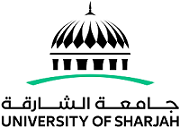Abstract
Discourse markers are omnipresent in language and are gaining more attention, especially, in audiovisual translation studies. This study aimed at examining the strategies used by translators in rendering six commonly used English discourse markers (oh, well, okay, I mean, you know, and yeah) into Arabic. Moreover, it shed light on the discourse markers found in seven children animated movies and sought to investigate the differences between three renditions of these movies: Arabic subtitles, Modern Standard Arabic dubbed version and colloquial Egyptian Arabic dubbed version. It also focused on the effect that the two audiovisual modes, subtitling and dubbing, have on the translation of these devices and the choices of translation strategies. The data consisted of 944 instances of the six discourse markers extracted from the movies' original scripts and their equivalents taken from the Arabic subtitled and dubbed versions of the movies. The findings reveal that the avoidance of SL discourse marker strategy was extensively used by translators in both modes of audiovisual translation. Moreover, the equivalents found in the colloquial Egyptian Arabic dubbed version were more diverse compared to the other two translations (the subtitled version and MSA dubbed version). The study revealed that the major translation strategies used in rendering English discourse markers into Arabic in both subtitled and dubbed versions were transliteration, literal translation, and functional translation.

